Amogy Completes Technology Verification Phase with LR
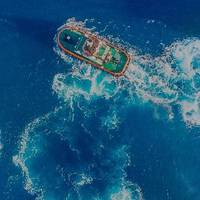
Ammonia power solutions company Amogy on Wednesday announced it has completed its Technology Verification phase with classification society Lloyd’s Register.This includes the assessment and certification of novel technologies through its Technology Qualification process where novel technologies are evaluated in terms of their technology maturity and associated risks. The first phase was undertaken in 2022, during which the technology readiness level of its core components and system interfaces were identified and assessed.
Aurelia’s 100% Hydrogen-powered Design Gets RINA Approval
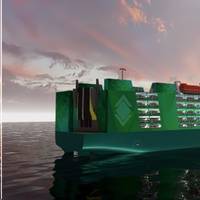
Aurelia Green Ship Concept Design's newly unveiled ship design featuring 100% hydrogen propulsion has received approval in principle (AIP) from RINA based on the newly published RINA Rules for Hydrogen Fueled Ships and the RINA Guide for the Approval in Principle of Novel Technologies.The new design concept is the ACD01 1000, a RoRo vessel with electric propulsion using highly compressed H2 as fuel. Beyond the green design, the difference is marked by the ship's hydrogen-based engine system…
Bombora Wraps Up Tank Testing of Floating Hybrid Energy Platform
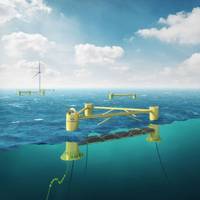
Wave energy converter developer Bombora Wave Power (Bombora) has completed tank testing of a floating foundation system suitable for the InSPIRE solution, where Bombora's mWave technology is combined with a wind turbine onto a single floating offshore platform.An adapted version of the semi-submersible INSPIRE platform, developed in partnership with TechnipFMC, underwent tank testing evaluations to confirm the system loads and dynamics at the FloWave test facility at the University of Edinburgh.Head of Loads and Modelling at Bombora…
Navy Establishing Unmanned Surface Vessel Fleet for Persistent ISR in Middle East

“We're not tinkering. We're building enhanced maritime domain awareness.”The U.S. Navy’s Task Force 59, based in Bahrain as part of the U.S. Naval Forces Central Command (NAVCENT) and U.S. Fifth Fleet, is advancing the operational employment and integration of unmanned systems and artificial intelligence in fleet operations.According to Vice Adm. Brad Cooper, the fleet commander, unmanned systems and artificial intelligence are helping to accelerate innovation, especially in such a vast area of responsibility (AOR)“It's 5…
Interview: Dr. Catherine Warner, Director, NATO CMRE

At CMRE, it’s not just about the science. It’s about building trust and confidence in resilient systems. An interview with Dr. Catherine Warner, Director, NATO Center for Maritime Research and Experimentation, La Spezia, ItalyTell us a little about yourself and CMRE. What does CMRE do, and how do you see your mission evolving?I came here from the Pentagon, where I was the science advisor for the director of operational test and evaluation. My experience has been working with operators on systems that they’re getting ready to field.
New Thruster Solutions Developed for Arctic Shipping
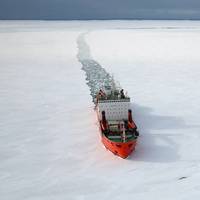
A team of European marine research institutes and companies have developed creative technologies for thruster solutions that are specifically engineered for ships operating in the Arctic.With the new solutions created under the three-year ArTEco project led by Finland's VTT and Wärtsilä, thruster lifetimes can be increased, their maintenance need can be decreased and their reliability improved, particularly in extreme conditions, the project partners said.While at sea, a ship must overcome tough resistance as it displaces water masses from its path.
Ship Tech: U.S. Coast Guard R&D Center
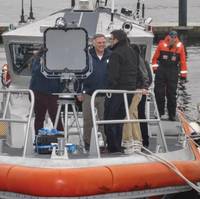
The U.S. Coast Guard Research and Development Center (RDC) in New London, Connecticut, is the service's only command conducting research, development, test and evaluation (RDT&E) support for all 11 statutory missions. Since its commissioning in 1972, RDC has been involved in over 2,000 projects and initiatives that have significantly benefited the Coast Guard and the components of the Maritime Transportation System. As the demand for research and development capability grows within the service…
MAN’s Subsea Compressors Reach Field Proven Status
Both subsea compression trains at Statoil’s Åsgard field have achieved more than 25,000 operation hours with an availability close to 100 percent. The world’s first subsea gas compression facility features two MAN Diesel & Turbo HOFIM motor-compressor units. The Åsgard subsea compression system has officially reached the highest Technology Readiness Level (TRL) 7 with both trains surpassing 10,000 operating hours. The subsea facility demonstrated an availability close to 100 percent - the very few interruptions were caused by failure of the power supply from the vessel. “MAN Diesel & Turbo’s persistence in driving technology solutions…
Europe to Build Ships of the Future
A new European research project seeks to revolutionize the shipbuilding sector by replacing steel with composite materials for the construction of more efficient large length ships. FIBRESHIP is an ambitious project that will allow for the construction of light commercial vessels, passenger and leisure transport and oceanographic vessels more than 50 meters in length using fibre reinforced polymer (FRP) composite materials. It is one of the largest innovation projects funded by the EU with a budget of €11 million, of which €9 million is funded by the EU’s Horizon 2020 Programme. The project involves 18 international entities representing the European shipping and shipbuilding industry from 11 countries including Cyprus…
Finalists Complete for $2 Mln Wave Energy Prize
U.S. The U.S. Department of Energy (DOE) announced that nine teams have been named finalists in the Wave Energy Prize—a 20-month design-build-test competition—and will proceed to the next phase of the competition. The nine finalists and two alternates, identified from the 17 remaining official qualified teams, will continue their quest to double the energy captured from ocean waves and win a prize purse totaling more than $2 million. Each of the finalists and alternates will now receive seed funding from DOE to develop 1/20th scale models of their wave energy converter (WEC) technologies. These models will be tested at the nation's most advanced wave-making facility…
Technology Readiness Levels Defined for Oil Spill Response
Bureau of Safety and Environmental Enforcement (BSEE) staff participated in a workgroup meeting at the bureau's Ohmsett facility in Leonardo, N.J., as part of the workgroup’s efforts to define Technology Readiness Levels for use in the oil spill response community. BSEE staff discussed the criteria that could be used to determine the readiness of technology with equipment manufacturers, industry, and facility representatives, drawing from their different perspectives and expertise. These discussions are part of the BSEE-funded project Technology Readiness Level Definitions for Oil Spill Response Technologies and Equipment. The project’s goal is to develop a uniform and objective method to quantify the maturity level of a new technology from concept to use offshore.
NASA to Further Develop Titan Submarine Design
Step forward the Titan Submarine, a proposal that NASA has just awarded a second round of funding through their Innovative Advanced Concepts (NIAC) program. It is very much just a concept at the moment, but it is promising nonetheless. Aside from Earth, Titan is the only place in the solar system that has bodies of liquid on its surface, making it a rather attractive place to explore. But while a number of proposals have been put forward to take a closer look, none have come to fruition. Phase II of the Titan Submarine: Exploring the Kraken Mare effort will focus on advancing the Technology Readiness Level (TRL) of the concept by (1) retiring risks found in the Phase I design…
Distortion Control "Tool Box" for Lightweight Ship Structures Workshop
This project compiles the physics and principles associated with distortion control derived from previous research and converts this knowledge base into a sequenced set of tangible, “shipyard friendly” implementation solutions designed to optimize several shipyard models. Distortion control modules will be designed and implemented to reduce the production rework associated with construction of lightweight ship structures. These modules will address the major sources of distortion, to include the welding and material handling processes. This project raises the technology readiness level of distortion control techniques to enable shipyard implementation.
BSEE Targets $7 Million Investment in Oil Spill Response Research
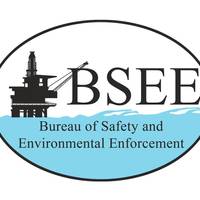
The Bureau of Safety and Environmental Enforcement (BSEE) announced that it is soliciting proposals for oil spill response research projects and will be investing up to $7 million to support these projects in 2014. In a Broad Agency Announcement released on the federal governments business opportunities website, FedBizOpps.gov, the bureau called for white papers focusing specifically on one of 10 topic areas for proposed research covering oil spill response operations on the U.S. Outer Continental Shelf.
Raytheon Zumwalt-class Destroyer Software Development Program
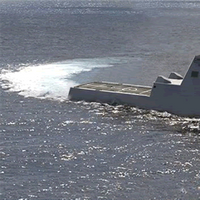
Raytheon Company deliver more than 6-million lines of software to the U.S. Navy for the DDG 1000 Zumwalt-class destroyer program. Part of the Total Ship Computing Environment (TSCE) -- the integrated mission system for the DDG 1000 class -- the software delivery supports ship activation and combat system testing, set to commence this year. The magnitude of this software development program is recognized as one of the most complex in the history of the U.S. Navy. TSCE continues to achieve all critical readiness milestones on schedule…





